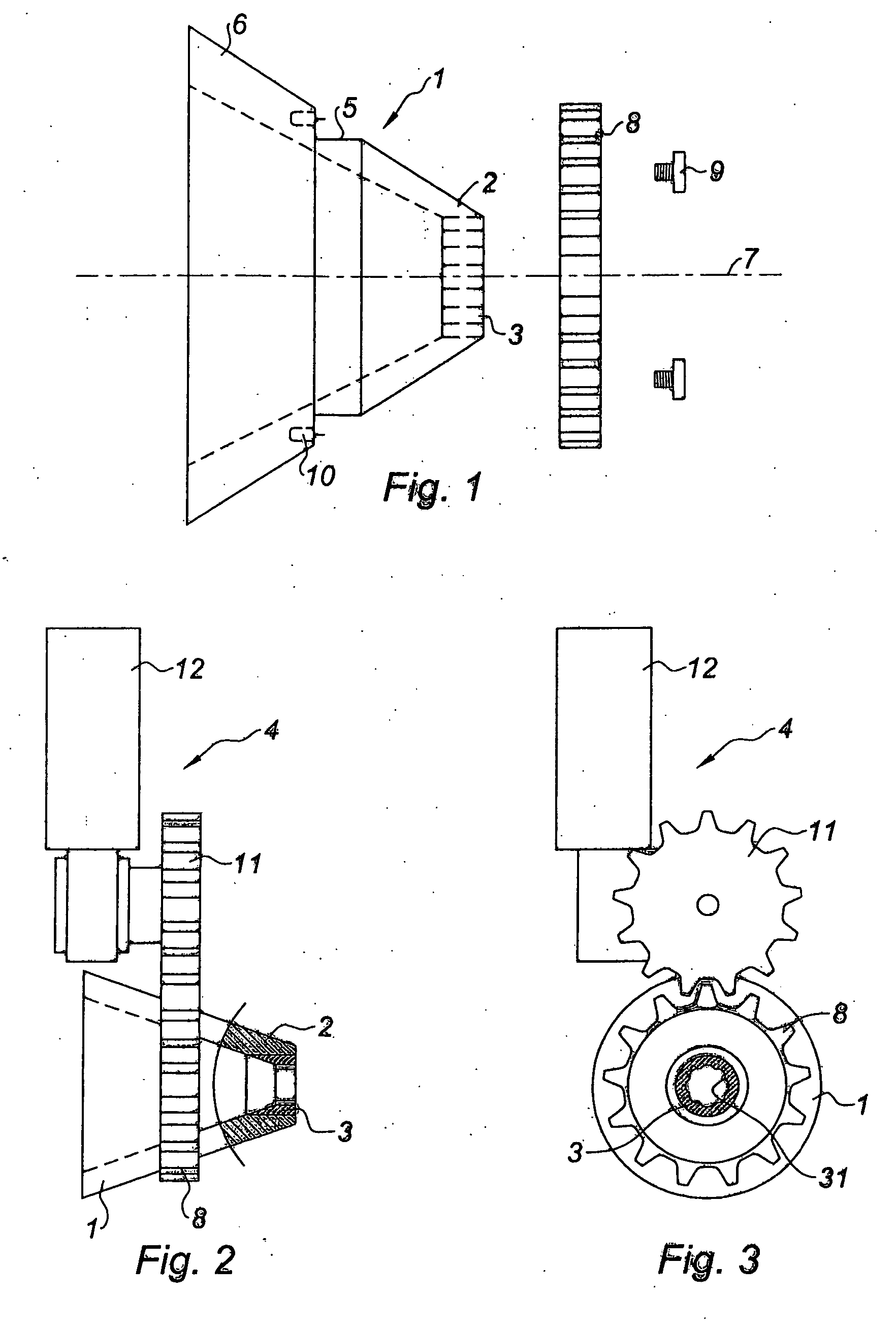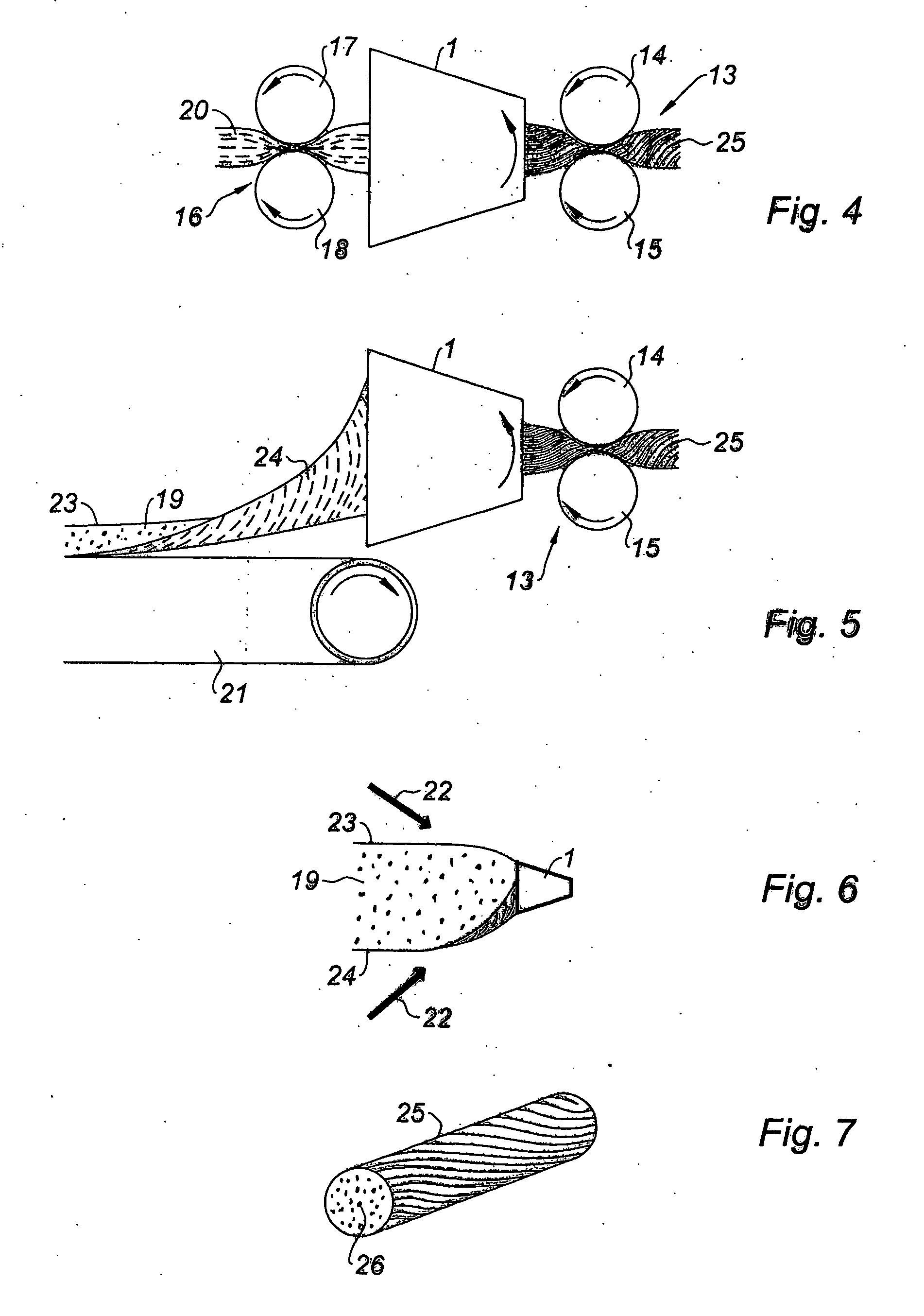Method and system for producing dressing products of polymer fibres useful for covering moist wounds
- Summary
- Abstract
- Description
- Claims
- Application Information
AI Technical Summary
Benefits of technology
Problems solved by technology
Method used
Image
Examples
Embodiment Construction
[0029] The equipment for twisting the fibres will now be described with reference to FIGS. 1-5. As illustrated in FIG. 1, the equipment comprises a bowl 1, which drives the fibres in rotation, and which can also be referred to as a funnel, of conical shape, made of plastic or of metal, having a twisting die 3 in its narrowed downstream part 2. The whole arrangement can be referred to as a whistle. The bowl 1 can be driven in rotation by a gear mechanism 4, as shown in FIG. 2.
[0030] An annular shoulder 5 is formed in the wall 6 of the bowl 1, overall in a transverse plane perpendicular to the axis 7 of the bowl 1, in order to receive the driven pinion 8 of the gear mechanism 4. The driven pinion 8 is fixed by screws 9 which are screwed into orifices 10 in the wall 6 of the bowl 1. The driven pinion 8 meshes with a driving pinion 11, itself driven by a motor 12, so as to form a wheel gear 8, 11.
[0031] In some embodiments, in place of the wheel gear 8, 11, a drive belt is mounted aro...
PUM
 Login to View More
Login to View More Abstract
Description
Claims
Application Information
 Login to View More
Login to View More - R&D
- Intellectual Property
- Life Sciences
- Materials
- Tech Scout
- Unparalleled Data Quality
- Higher Quality Content
- 60% Fewer Hallucinations
Browse by: Latest US Patents, China's latest patents, Technical Efficacy Thesaurus, Application Domain, Technology Topic, Popular Technical Reports.
© 2025 PatSnap. All rights reserved.Legal|Privacy policy|Modern Slavery Act Transparency Statement|Sitemap|About US| Contact US: help@patsnap.com


